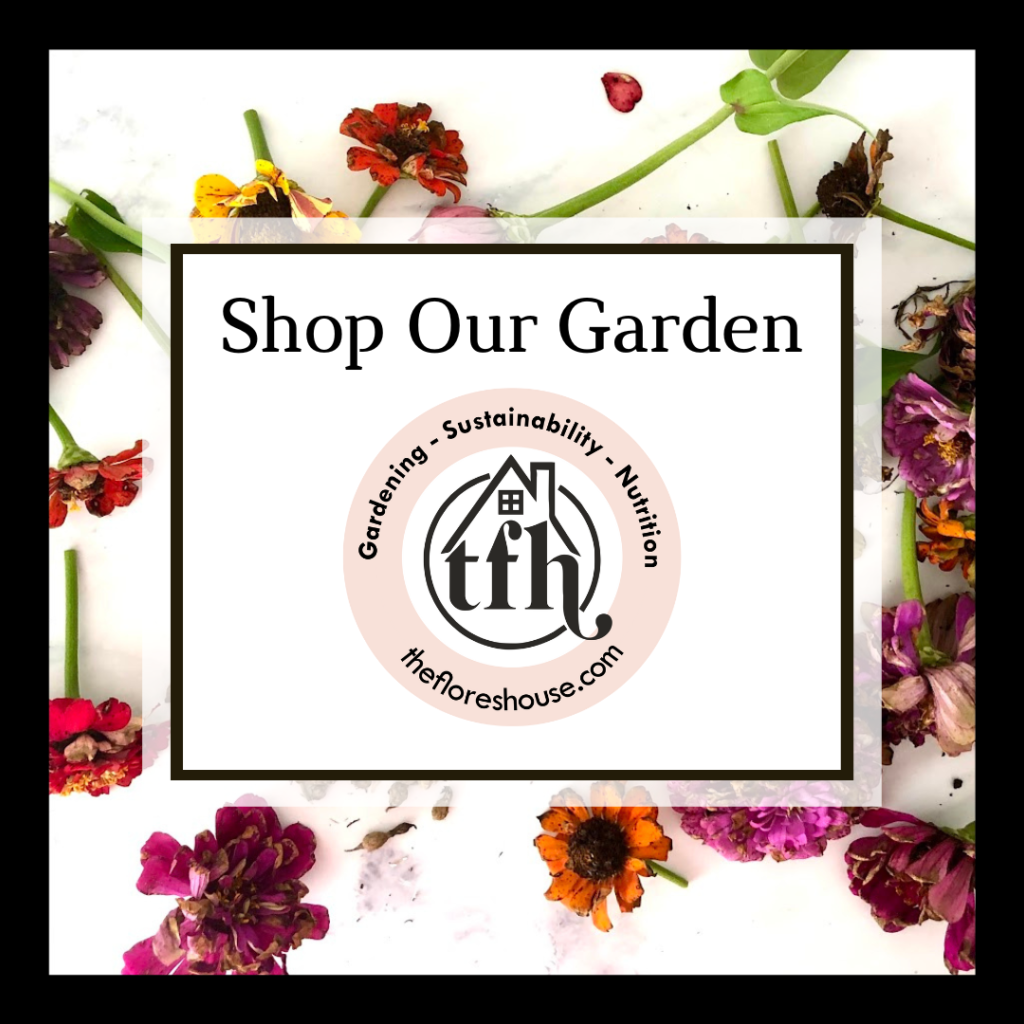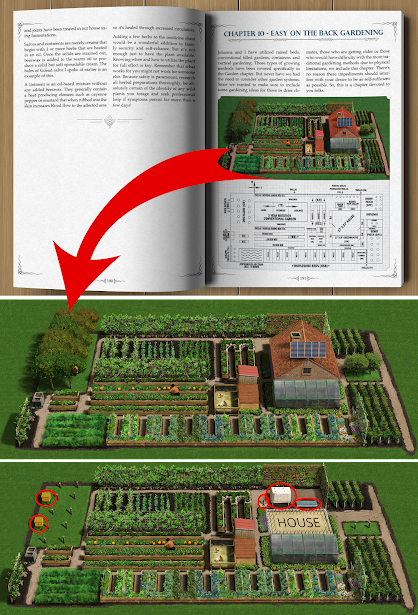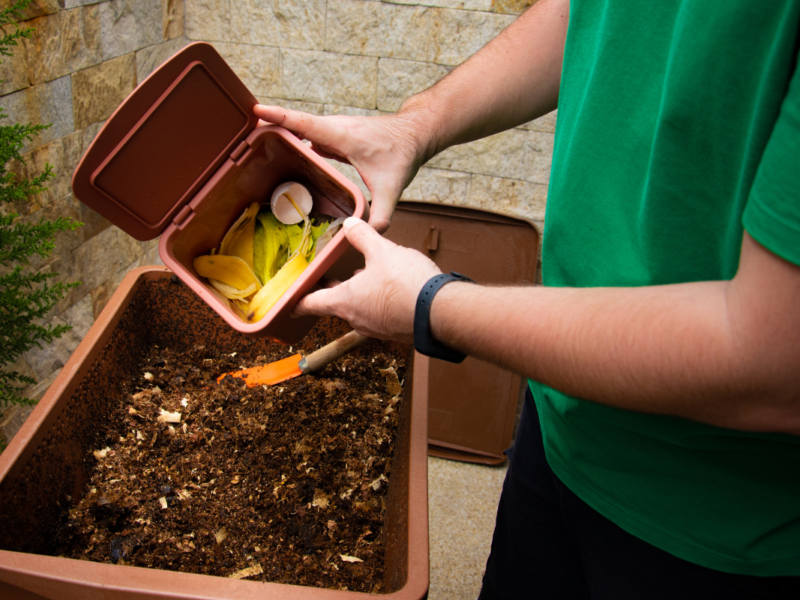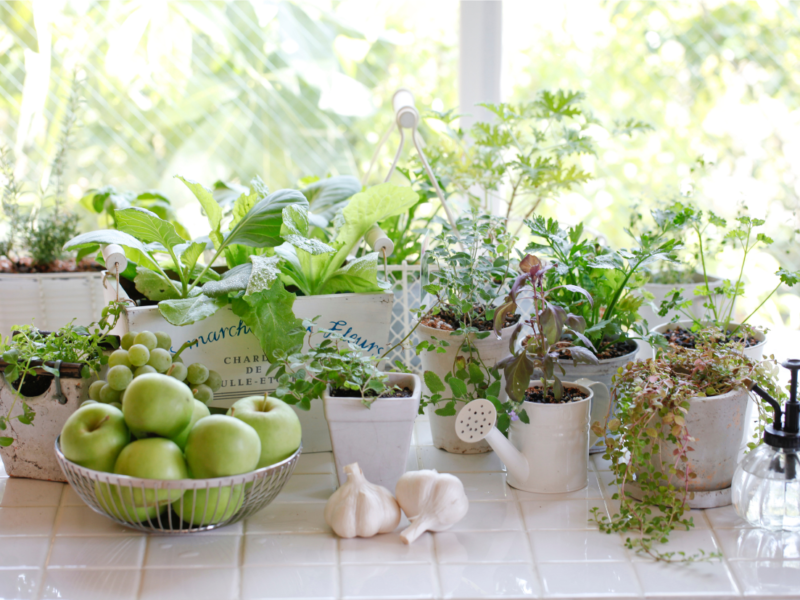Uncover the secrets of preserving heritage, cultivating self-sufficiency, and creating a sustainable life with heirloom gardening for new homesteaders. Discover the advantages of heirloom gardening for achieving self-sufficiency, and gain valuable insights on establishing an heirloom garden on your homestead.
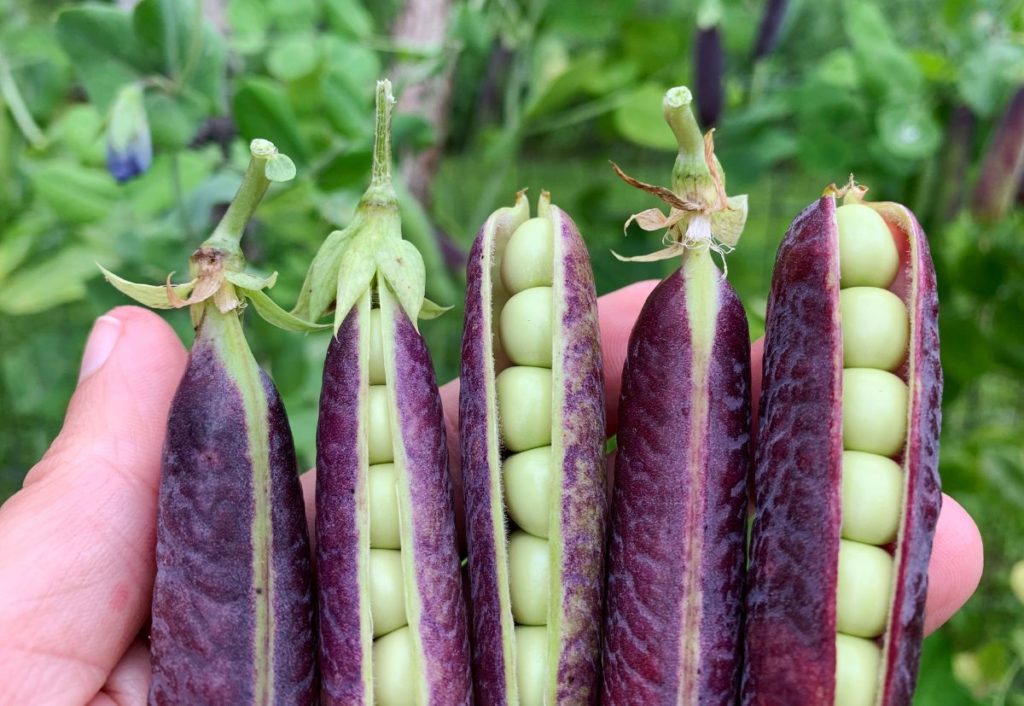
This post may contain affiliate links, which means I can receive a commission from any purchase made from the links. I earn from purchases from Amazon links. See the disclosure policy here.
Homestead Haven: Simple Heirloom Gardening for You
Heirloom gardening is a practice that involves growing and preserving plant varieties with a rich history and heritage.
These heirloom plants are open-pollinated, meaning they have been passed down through generations without genetic manipulation.
Heirloom varieties maintain their original traits, flavors, and characteristics, unlike hybrid or genetically modified plants.
They often carry cultural significance and possess unique qualities cherished by gardeners for decades or even centuries.
Heirloom gardening emphasizes the preservation of genetic diversity, allowing us to reconnect with our agricultural past and foster a sustainable future.
Heirloom Gardening Uses Genetically-Strong, Nutrient-Rich Plants.
By cultivating heirloom plants, homesteaders can enjoy an array of delicious and visually stunning crops and contribute to preserving our botanical heritage for generations.
Distinguishing between heirloom, hybrid, and genetically modified plants is essential.
What’s the difference between hybrids, GMOs, and heirlooms?
Heirloom plants are traditional cultivars passed down through generations, often with a history that dates back 50 years or more. They are valued for their unique flavors, colors, and adaptability to specific regions.
On the other hand, hybrid plants result from cross-breeding different varieties to produce offspring with desirable traits such as disease resistance or increased yield. These hybrids do not reliably produce seeds with the same characteristics as the parent plants.
Genetically modified plants, or GMOs, have been genetically engineered to introduce specific traits, such as pest resistance or herbicide tolerance, through laboratory manipulation.
Benefits of Heirloom Gardening for Homesteaders
Growing heirloom varieties holds several benefits for homesteaders.
Firstly, it promotes self-sufficiency as heirloom plants allow for seed-saving, enabling homesteaders to maintain a self-reliant seed supply.
Unlike hybrid or GMO plants, heirlooms produce seeds that will grow into plants with similar traits, ensuring the ability to save and replant seeds from season to season. This reduces dependence on commercial seed sources.
Secondly, heirloom gardening supports biodiversity. By cultivating heirloom plants, homesteaders play a vital role in preserving genetic diversity and protecting rare or endangered plant varieties.
This helps maintain resilient and adaptable ecosystems and safeguards our agricultural heritage.
Additionally, heirloom varieties often exhibit exceptional flavors, unique appearances, and a wider range of nutritional profiles, offering a diverse and enjoyable culinary experience.
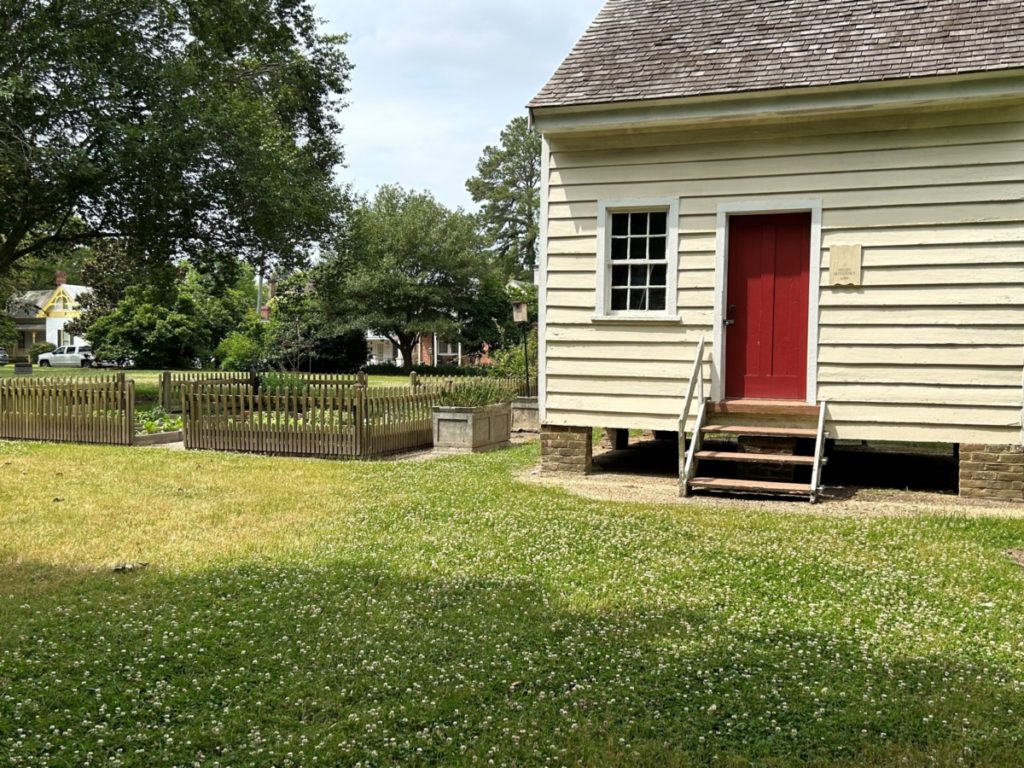
The History of Heirloom Gardening on a Homestead
The history of heirloom gardening on homesteads is deeply rooted in the self-sufficiency and resilience of early settlers.
Homesteaders, who sought to establish their sustainable livelihoods, embraced saving and passing down seeds from one generation to the next. These seeds, carefully selected and preserved over time, became the foundation of heirloom gardening on homesteads.
These gardens served as a vital source of nourishment, providing diverse fruits, vegetables, and herbs for sustenance throughout the seasons.
Heirloom plants cultivated on homesteads were treasured for adapting to local climates, resisting pests and diseases, and offering unique flavors and characteristics.
The history of heirloom gardening on homesteads is a testament to the enduring spirit of self-reliance, resourcefulness, and the intergenerational knowledge that has sustained families and communities for centuries.

Heirloom Plants Tell Stories From the Past
Heirloom plants carry tales of the past, whispering stories of bygone eras and cultural significance. Let’s delve into the fascinating history and heritage of specific heirloom plant varieties, unveiling anecdotes, folklore, and the rich tapestry of their cultural significance.
- Mortgage Lifter Tomato: This legendary heirloom tomato variety originated in the early 20th century, bred by M.C. Byles, also known as “Radiator Charlie.” It is said that Byles developed this exceptional tomato through cross-pollination and selection, eventually selling enough plants to pay off his mortgage. The Mortgage Lifter tomato symbolizes hard work, perseverance, and the power of plants to change lives.
- Moon and Stars Watermelon: With its dark green skin speckled with tiny yellow dots resembling stars and a larger yellow patch reminiscent of the moon, this heirloom watermelon variety captivates both the eyes and taste buds. Moon and Stars watermelon carry the tale of its disappearance from mainstream agriculture, only to be rediscovered and preserved by dedicated seed savers. It serves as a reminder of the importance of safeguarding genetic diversity.
- Moonflower: The moonflower vine, a beloved heirloom, enchants gardeners with its large, fragrant white flowers that bloom at night. It is steeped in folklore and has inspired stories across cultures. In some Native American tribes, the moonflower is associated with dreams and the spirit world. Moonflower’s ethereal beauty and nocturnal blooming habit evoke a sense of mystery and wonder.
- Glass Gem Corn: The breathtaking Glass Gem corn has a captivating story rooted in the Native American tradition. It was developed by Carl Barnes, a Cherokee farmer who devoted years to selecting and saving vibrant, jewel-like corn seeds. The diversity of colors represented in Glass Gem corn serves as a reminder of indigenous communities’ resilience and cultural heritage.
These stories of heirloom plants passed down through generations demonstrate the enduring bond between humans and nature. They embody the importance of preserving our agricultural heritage, biodiversity, and the wisdom embedded in traditional cultivation practices.
Whether it’s the tale of a tomato that lifted burdens, a watermelon that reemerged from obscurity, a flower that dances with the moon, or corn that resembles a treasure trove, heirloom plants hold within them a living history that connects us to our ancestors and the wisdom of the land.
By cultivating heirloom plants, we become custodians of these stories, passing them on to future generations. As we tend to our gardens, let us cherish the heritage embedded in these plants, celebrating their resilience, flavors, colors, and the profound narratives they carry.
Planning: How New Homesteaders Cultivate Heritage and Abundance with Heirloom Gardening
Selecting the right heirloom plants for your homesteader’s garden is an essential first step toward a thriving and fruitful harvest.
When choosing heirloom varieties, consider your climate, growing conditions, available space, and personal preferences. Here are some tips to guide you in selecting the perfect plants for your heirloom garden:
- Research and explore: Familiarize yourself with different heirloom varieties available. Consider their growth habits, yield potential, disease resistance, and flavor profiles. Look for plants that are well-suited to your specific region and growing conditions.
- Consider your goals: Determine your priorities for the garden. Are you looking to grow various vegetables, focus on specific crops, or emphasize diversity? When selecting heirloom plants, consider your dietary needs, culinary preferences, and long-term sustainability goals.
- Preserve heritage: Choose heirloom plants with a rich history and cultural significance. These varieties often carry unique stories and traditions, adding a touch of heritage to your garden and plate.
- Start small: If you’re new to heirloom gardening, begin with a manageable selection of plants. This allows you to gain experience and gradually expand your collection in future seasons.
Once you have chosen your heirloom plants, it’s time to prepare your garden beds for optimal growth and productivity. Soil preparation is crucial for creating a healthy environment for your plants. Here’s how to get started:
- Test your soil: Conduct a soil test to assess its pH and nutrient composition. This information will guide you in making any necessary amendments to optimize the soil for your chosen plants.
- Amend the soil: Add organic matter such as compost, well-rotted manure, or leaf mold to improve soil structure, fertility, and drainage. This will provide a nutrient-rich foundation for your plants.
- Mulch and protect: Apply a layer of organic mulch, such as straw or wood chips, around your plants. Mulching helps conserve moisture, suppress weeds, and maintain a consistent soil temperature.
- Rotate and replenish: Practice crop rotation for annuals like beans, potatoes, corn, and tomatoes to minimize disease and pest issues. Rotate plant families each season to prevent nutrient depletion and promote soil health. Use companion planting methods and plant perennials throughout the space for year-round growth. Replenish nutrients with natural fertilizers like rabbit manure and grass mulch.
Read Next: The Best Organic Compost for Vegetables
Once your soil is prepared, it’s time to design and organize your heirloom garden layout. Consider the following factors to make the most of your space and maximize efficiency:
- Sun exposure: Determine the sunlight requirements of your plants and plan your garden layout accordingly. Group sun-loving plants together in areas that receive ample sunlight while providing shade for more delicate varieties.
- Companion planting: Take advantage of companion planting principles by placing plants that benefit the plants nearby. Some plants repel pests, while others enhance pollination or provide natural shade. Download our Free Garden Planner to get a companion planting cheat sheet!
- Vertical gardening: Utilize trellises, stakes, or fences to support climbing or vining plants, maximizing space and increasing yields.
- Succession planting: Plan for successive plantings to ensure a continuous harvest throughout the growing season. As one crop finishes, replant the area with a new variety or a second round of the same crop.
Remember, an heirloom garden is a source of nourishment and a tribute to our agricultural heritage. With careful selection, thoughtful soil preparation, and strategic garden design, your heirloom garden will flourish, providing a bountiful harvest of beautiful, flavorful, and historically significant crops.
Grow Nutrient-Rich Heirloom Vegetables
Heirloom vegetables are not just ordinary crops but a gateway to a world of diverse flavors, vibrant colors, and strong genes, making them resilient plants for the garden. Here are some specific heirloom vegetable varieties to consider, along with their unique characteristics:
- Brandywine Tomato: Renowned for its exceptional flavor, Brandywine is an heirloom tomato variety that delights taste buds with its sweet and tangy notes. It boasts large, beefsteak-like fruits with a pinkish hue and a slightly uneven shape. Perfect for slicing and enjoying fresh salads or sandwiches.
- Cosmic Purple Carrot: This captivating heirloom carrot variety features a deep purple exterior and an orange interior. Beyond their stunning appearance, Cosmic Purple carrots offer a subtly sweet flavor with hints of spice. Roast them, add them to stir-fries, or savor them raw for a delightful culinary experience.
- Dragon Tongue Bean: Named for its eye-catching appearance, the Dragon Tongue Bean is a Dutch heirloom variety with purple-speckled yellow pods. This versatile bean can be enjoyed fresh when young or cooked as a tender, flavorful addition to various dishes.
- Glass Gem Corn: A true marvel for the eyes and the taste buds, Glass Gem corn displays a spectacular array of translucent, multicolored kernels. This heirloom corn variety is visually stunning and offers a sweet and satisfying flavor when freshly harvested and prepared.
Sowing Heirloom Seeds in the Homestead Garden
Now that you have selected your heirloom vegetable varieties, it’s time to sow seeds, transplant, and care for them:
- Sowing Seeds: Start seeds indoors based on the recommended germination time for each specific variety. Use a high-quality seed starting mix and provide adequate light, moisture, and warmth. Once the risk of frost has passed, transplant seedlings into your prepared garden beds. Keep in mind a lot of seeds do best when sown directly.
- Transplanting: Handle seedlings gently to avoid damaging the delicate roots. Dig a hole slightly larger than the root ball and place the seedling, ensuring it sits at the same depth as in the container. Fill the hole with soil, firm gently, and water thoroughly.
- Watering and Fertilizing: Heirloom vegetables thrive with consistent moisture. Water deeply, but avoid overwatering to prevent root rot. Incorporate organic compost or well-balanced organic fertilizer into the soil to provide essential nutrients throughout the growing season.
- Organic Pest and Disease Management: Preventing and managing pests and diseases organically is crucial for maintaining the health of your heirloom vegetables. Encourage natural predators like ladybugs and lacewings, practice crop rotation, and use physical barriers such as row covers to protect against pests. Employ organic pest control methods like neem oil, insecticidal soaps, or homemade sprays to deter common pests.
Regularly inspect your plants for signs of pests or disease, and take immediate action to mitigate any potential damage.
Cultivating heirloom vegetables is a rewarding experience that allows you to savor the unique flavors and embrace the history of these treasured crops. You can enjoy a thriving heirloom garden that brings visual delight and culinary satisfaction by following proper sowing, transplanting, and care techniques, and employing organic pest and disease management strategies.
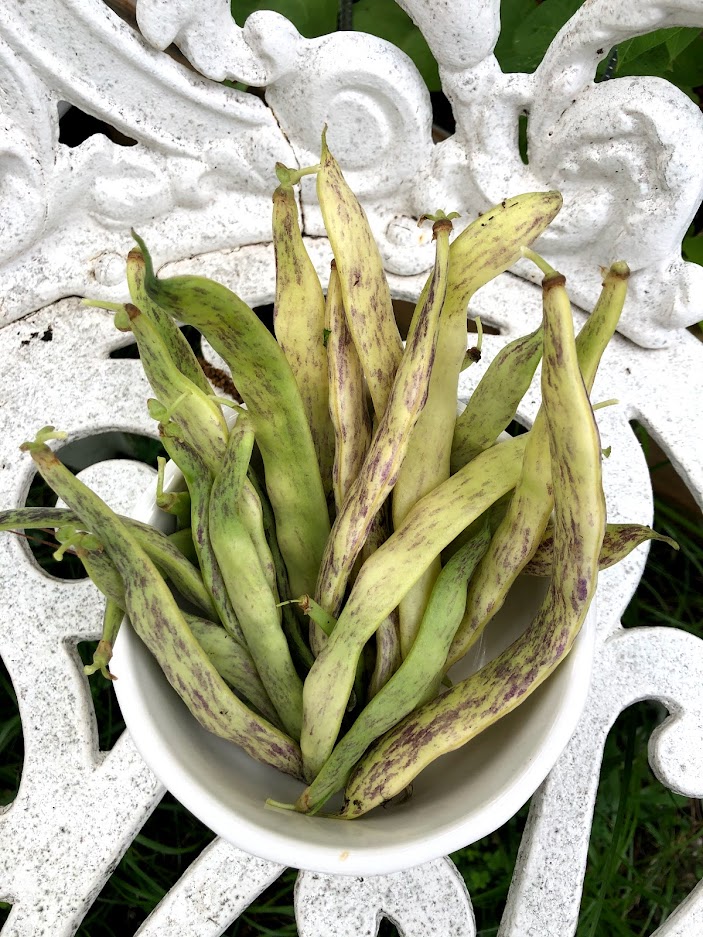
Heirloom Gardening: Seed Saving Tips for Homesteaders
Seed saving is essential for heirloom gardening and homesteading, as it ensures the preservation and continuity of treasured heirloom plant varieties. Here are some valuable seed-saving tips to help homesteaders cultivate a sustainable seed bank:
- Selecting plants for seed saving: Choose the healthiest and most robust plants with desirable traits to save seeds from. Look for traits such as disease resistance, flavor, productivity, and adaptation to local conditions.
- Isolation and pollination: To maintain the purity of heirloom seeds, prevent cross-pollination by keeping different varieties of the same plant species adequately isolated. This can be achieved through physical barriers like distance, netting, or cages.
- Timing and maturity: Allow the plant to fully mature before harvesting seeds. Typically, this means waiting until the fruits or vegetables are fully ripe or until the seed heads have dried on the plant.
- Harvesting and processing seeds: Collect seeds when fully mature and dry. Remove the seeds from the plant and separate them from debris. Allow the seeds to air dry completely before storing them.
- Proper storage: Store seeds in a cool, dry, dark place to maintain viability. Use airtight containers such as glass jars or envelopes, and consider adding desiccant packets to control moisture levels.
- Labeling and record-keeping: Keep detailed records of the seeds you save, including the variety, date of harvest, and any important notes or observations. Label your seed containers clearly to avoid confusion.
- Germination testing: Conduct germination tests on saved seeds to assess their viability. This ensures that you are working with viable seeds for future plantings.
Seed-Saving is an Art and Science
By practicing seed saving, homesteaders not only preserve the genetic diversity and unique traits of heirloom plants but also foster self-reliance and reduce dependency on commercial seed sources. It allows for the continuation of regional heirloom varieties and empowers homesteaders to adapt and select plants that thrive in their specific microclimates.
Seed saving is an art that connects us to the legacy of our ancestors and promotes the sustainability and resilience of heirloom gardening on homesteads.
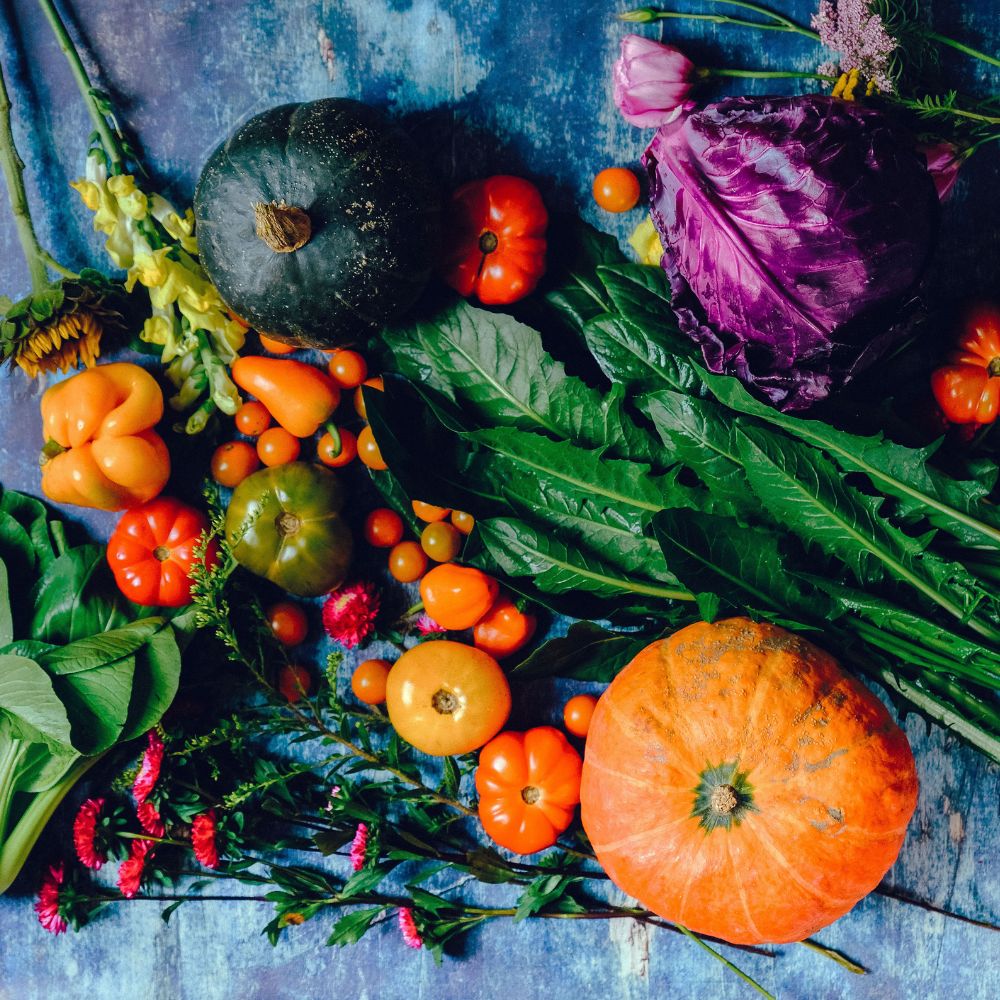
Sustainable Homestead Gardens Grow Heirlooms
Heirloom gardening and sustainable homesteading go hand in hand, as both practices embrace the principles of self-reliance, environmental stewardship, and preserving biodiversity. By cultivating heirloom plants, homesteaders can actively contribute to sustainable food production, reduce their ecological footprints, and foster a deeper connection with the land. Here’s a closer look at how heirloom gardening aligns with the principles of sustainable homesteading:
- Preservation of Genetic Diversity: Heirloom plants offer a treasure trove of genetic diversity passed down through generations. By growing heirloom varieties, homesteaders play a crucial role in safeguarding and conserving these unique plant genetics. This preservation effort helps maintain a resilient and diverse seed bank, reducing the risk of crop vulnerability and ensuring long-term food security.
- Self-Sufficiency and Food Independence: Heirloom gardening empowers homesteaders to become more self-sufficient in food production. By cultivating a wide range of heirloom vegetables, fruits, and herbs, homesteaders can reduce their dependence on commercial food systems and have greater control over the quality and sustainability of their food sources. Harvesting and preserving the bounties of their heirloom gardens allow homesteaders to extend the availability of fresh, nutritious produce throughout the year.
- Enhancing Soil Health and Biodiversity: Heirloom gardening promotes sustainable soil practices that nurture the Earth. Homesteaders can improve soil fertility and structure by avoiding synthetic chemicals and focusing on organic fertilizers, composting, and cover cropping. Heirloom gardens also support biodiversity by attracting beneficial insects, birds, and other wildlife, creating a balanced ecosystem that enhances the overall health of the homestead.
- Seed Saving and Adaptation to Local Conditions: Heirloom plants have adapted to specific microclimates and local growing conditions. By saving and replanting seeds from successful heirloom crops, homesteaders can cultivate plants better suited to their specific environment. This practice promotes resilience and reduces the need for external inputs, such as seeds from distant regions or hybrid varieties that may require more intensive care.
Sustainable Living and Heirloom Gardening Go Together Like Peas and Carrots
Yes, that is a Forest Gump reference! Integrating heirloom gardening into a sustainable homestead lifestyle offers numerous possibilities:
- Implement companion planting techniques to maximize space, deter pests naturally, and enhance plant health.
- Establish perennial heirloom plants, such as fruit trees or berry bushes, for long-term sustainability and a perennial food source.
- Incorporate heirloom flowers into the garden to attract pollinators and beneficial insects, promoting overall ecosystem health.
- Utilize organic pest control methods, such as companion planting, handpicking pests, or introducing beneficial insects, to maintain a balanced ecosystem and minimize reliance on chemical pesticides.
- Practice water conservation techniques, such as rainwater harvesting and drip irrigation, to minimize water usage and promote sustainable water management.
By embracing the principles of heirloom gardening within a sustainable homesteading lifestyle, individuals can foster a harmonious relationship with nature, reduce their environmental impact, and cultivate a resilient and self-sustaining homestead that nourishes both the body and the soul.
Heirloom Gardening Challenges and Solutions
Heirloom gardening, while rewarding and enriching, comes with its own set of challenges. However, these challenges can be overcome with some knowledge and proactive measures.
One challenge is the limited availability of heirloom seeds, which may be harder to find than hybrid or genetically modified varieties. The solution lies in connecting with local seed exchanges, heirloom seed companies, or fellow gardeners passionate about preserving heirloom plant varieties.
Another challenge is the potential susceptibility of heirlooms to certain pests and diseases. To address this, implementing organic pest control methods, such as companion planting, crop rotation, and regular monitoring, can help mitigate these issues.
Additionally, ensuring proper soil preparation, including amending with organic matter and maintaining good drainage, can enhance plant health and reduce the risk of soil-borne diseases.
Finally, climate and regional factors may challenge the growth of specific heirloom varieties. Adapting and selecting varieties well-suited to the local climate, utilizing season extenders such as row covers, or greenhouses, and actively participating in seed saving to develop regionally adapted strains can help overcome these challenges.
With a proactive mindset, a willingness to learn, and a supportive community, the challenges of heirloom gardening can be addressed, allowing for the successful cultivation and preservation of these precious plant varieties.
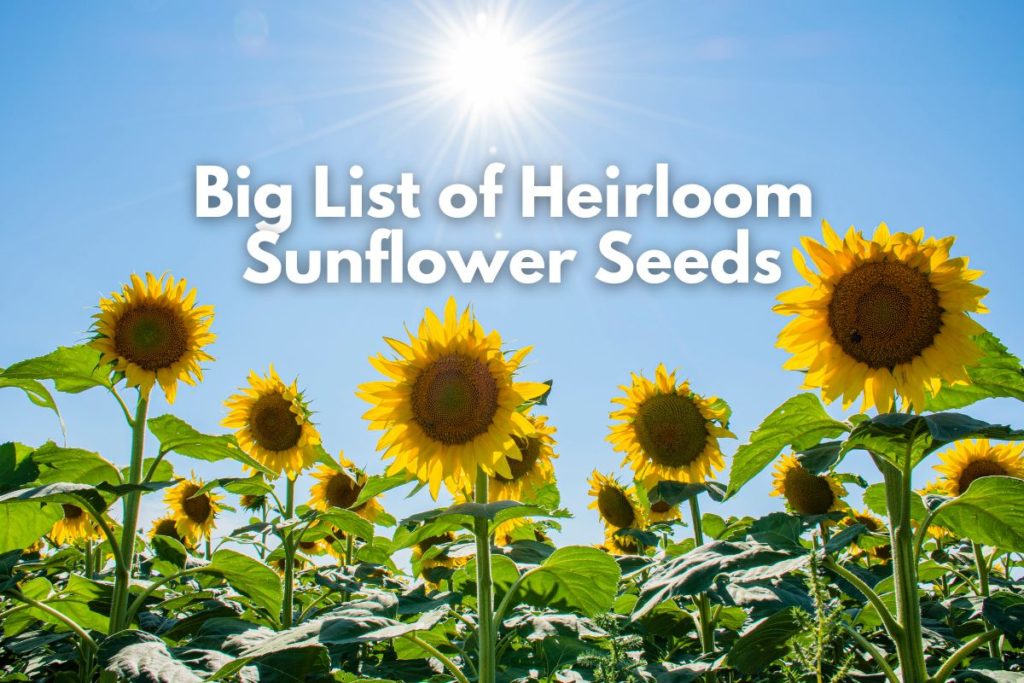
Where to Find Heirloom Garden Seeds
You can find heirloom garden seeds for your gardening needs from several reliable sources. Here are some options to consider:
- Seed Companies: Many reputable seed companies specialize in heirloom seeds. Some well-known companies include Baker Creek Heirloom Seeds, The Flores House Garden Shop, and 99cent Heirlooms. These companies offer a wide selection of heirloom varieties, often providing detailed descriptions and growing information for each seed.
- Local Seed Exchanges: Participating in local seed exchanges or seed swap events can be a great way to find heirloom seeds. These community-based initiatives allow gardeners to share and trade seeds, often including heirloom varieties. Check with your area’s gardening clubs, community gardens, or agricultural extension offices to learn about upcoming seed exchange events.
- Online Marketplaces: Online marketplaces such as Etsy and Amazon also offer a variety of heirloom seeds from individual sellers. When purchasing from online marketplaces, it’s essential to read reviews, check the seller’s ratings, and ensure they have a positive track record in providing quality seeds.
- Garden Shows and Fairs: Attending garden shows, fairs, or farmers’ markets dedicated to plants and gardening can provide an opportunity to find heirloom seeds. These events often feature vendors selling diverse seeds, including heirloom varieties. You can also interact with knowledgeable sellers who advise and guide you on selecting the right seeds for your needs.
- Local Seed Libraries: Some communities have established seed libraries where you can borrow or exchange seeds, including heirloom varieties. These libraries often operate through public libraries, community centers, or cooperative organizations. Check if a seed library exists in your area and inquire about their collection of heirloom seeds.
Remember, choosing reputable sources is essential to ensure the quality and authenticity of the heirloom seeds you acquire. Consider the specific varieties you’re interested in, their adaptability to your growing conditions, and any specific requirements or challenges they may have. By exploring these avenues, you can find a wide range of heirloom garden seeds to enrich your gardening experience and contribute to preserving heirloom plant diversity.
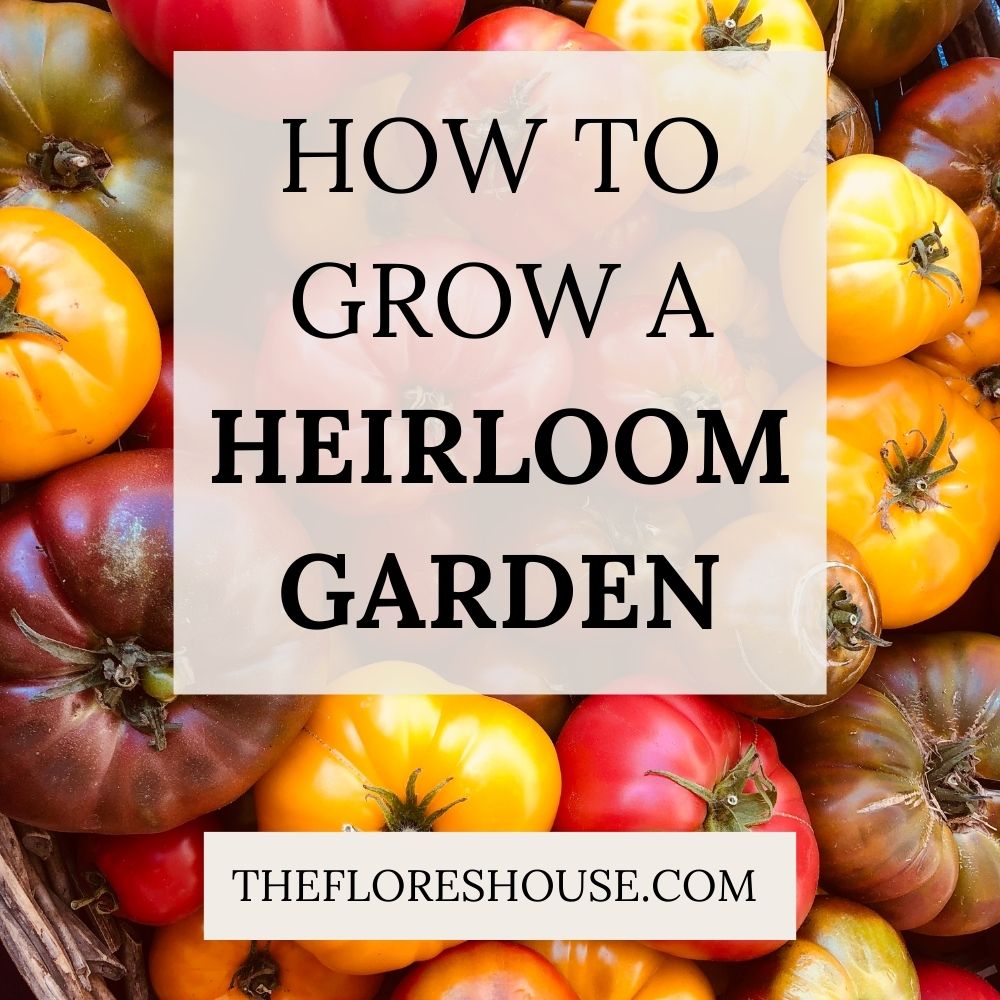
In summary, heirloom gardening represents the preservation of traditional plant varieties that have withstood the test of time. It allows homesteaders to maintain self-sufficiency, contributes to biodiversity conservation, and savor the rich flavors and beauty of heirloom produce. By embracing heirloom gardening, homesteaders connect with their agricultural roots and become stewards of our botanical heritage, ensuring its continued existence for future generations.
Read Next: Starting a Homestead the Right Way

